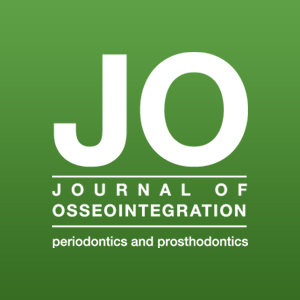Immediate implant placement in posterior maxilla: a prospective clinical study

Submitted: 25 September 2020
Accepted: 13 September 2021
Published: 4 October 2021
Accepted: 13 September 2021
Abstract Views: 1012
pdf: 1890
Publisher's note
All claims expressed in this article are solely those of the authors and do not necessarily represent those of their affiliated organizations, or those of the publisher, the editors and the reviewers. Any product that may be evaluated in this article or claim that may be made by its manufacturer is not guaranteed or endorsed by the publisher.
All claims expressed in this article are solely those of the authors and do not necessarily represent those of their affiliated organizations, or those of the publisher, the editors and the reviewers. Any product that may be evaluated in this article or claim that may be made by its manufacturer is not guaranteed or endorsed by the publisher.


 https://doi.org/10.23805/JO.2021.13.04.4
https://doi.org/10.23805/JO.2021.13.04.4








